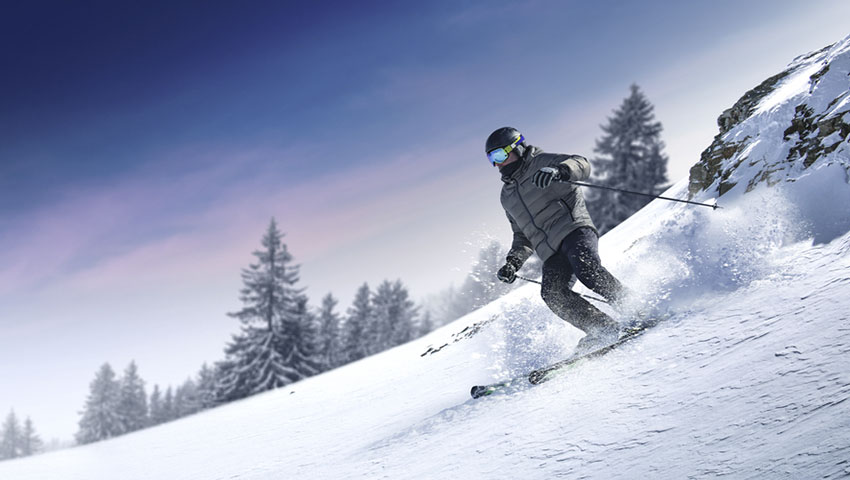For many, the first snowfall of the winter means one thing: skiing season has begun. Hitting the slopes is a great way to stay fit during the colder months, but given the high speed of the sport and crowded runs come January, it’s not uncommon for skiers to take an occasional fall. Fortunately, proper preparation can reduce your chance of getting injured while skiing.
Fatigue
This plays a huge role in ski injuries, just as it does in many other sports. The cost of ski trips can be substantial, and we all feel the need to get our money’s worth. Often we start the day without a warmup or even without pre-season fitness build-up. Skiers may feel fatigue setting in when their thighs get tired and they start to “feel the burn” or start cramping towards the end of the day. That is when the skiing gets a little sloppy and less crisp. It is a setup for disaster. The problem is that it can be cumulative. The next day the thighs are sore and you start the day in less than optimal condition. Most skiing injuries that I see have occurred either toward the end of the vacation or at the end of a day.
Awareness
A skiing injury can occur with collisions or “close calls”. Like car accidents, often the injured skier is not at fault. The aviation term, “head on a swivel” comes to mind. It is best to be a defensive skier, just as we should be defensive drivers. You will be prepared to make a correction by assuming that the skier near you or above you may make a sudden unexpected turn. If you are passing someone, make them aware of where you are. Likewise, be listening for noise behind you, which means that you should not be wearing earphones or earbuds while skiing!
Practice Proper Fall Techniques
Falling can be scary, which is why it’s important to prepare your body to protect itself. It might seem counterintuitive, but you can train yourself not to panic or seize up when you begin to fall. This helps your body stay more flexible, preventing injuries such as ACL tears, spinal injuries, and shoulder dislocations. Start by practicing without your equipment, and test out different strategies as you fall forward or backward.
Don't Use Your Hands
It’s a common reaction for skiers to try to break a fall using their hands. However, this misguided instinct can lead to fractured wrists or other painful hand injuries. Instead, try using your forearms to brace yourself, or roll onto your side to minimize the stress on your hands and wrists.
Spread Out The Impact Of Your Fall
To do the least amount of damage, your body should hit the ground with the maximum surface area. If possible, try to spread out the impact of your fall by rolling onto your side. This prevents one body part (such as your arms or legs) from bearing the brunt of your weight and suffering a debilitating injury.
When Falling Forward, Do A Front Roll
If you find yourself falling head first, your first instinct is of course to protect your face. However, instead of putting out your hands and risking a wrist fracture, attempt to turn your body forward into a front roll. Focus on putting the majority of your weight on your shoulder or side. As you roll, it’s important to avoid landing on your head or neck, which can result in painful neck injuries.
While learning how to fall can help you avoid serious injuries, it’s also essential to use proper equipment and protective wear. Never hit the slopes without your helmet, and be sure to have your skis checked regularly for loose bindings or other common issues that can pose a safety hazard.












